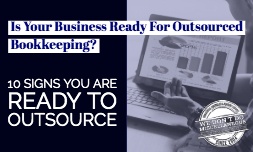NetSuite provides a powerful suite of tools for managing your business operations, but its true value lies in the strategic insights it can unlock. For business owners and financial managers, accurate and timely financial reporting is the foundation of sound decision-making. These reports transform raw data into a clear picture of your company's performance, health, and operational efficiency.
While NetSuite offers a vast array of customizable reports, mastering a few core financial statements is essential for navigating growth and maintaining stability. Understanding these key reports allows you to move beyond day-to-day management and toward strategic financial oversight. This article will detail the three most critical financial reports every NetSuite user should run regularly: the Income Statement, the Balance Sheet, and the Cash Flow Statement.
1. Income Statement
The Income Statement, also known as the Profit and Loss (P&L) statement, is a fundamental report that summarizes your company's financial performance over a specific period, such as a month, quarter, or year. It provides a direct view of your business's profitability by detailing revenues, costs, and expenses.
What It Tells You
The primary purpose of the Income Statement is to answer a simple but vital question: Is the business making a profit? It does this by subtracting the total costs and expenses from the total revenue to arrive at the net income or net loss.
- Revenue: The top line of the report, showing the total amount of money generated from sales of goods or services.
- Cost of Goods Sold (COGS): The direct costs associated with producing the goods or services you sell.
- Gross Profit: The profit left after subtracting COGS from revenue. This figure indicates how efficiently you are producing and pricing your products.
- Operating Expenses: Costs not directly tied to production, such as marketing, salaries, and rent.
- Net Income: The bottom line, representing the final profit or loss after all expenses have been deducted from revenue.
Why It’s Important for Decision-Making
Running an Income Statement in NetSuite allows you to analyze trends, identify areas of overspending, and assess the effectiveness of your pricing strategies. By comparing P&L statements from different periods, you can track revenue growth, monitor expense fluctuations, and make informed adjustments to your business plan. This report is indispensable for budgeting, forecasting, and demonstrating profitability to investors or lenders.
2. Balance Sheet
While the Income Statement shows performance over time, the Balance Sheet provides a snapshot of your company's financial position at a single point in time. It is built on the fundamental accounting equation: Assets = Liabilities + Equity. This report gives you a clear understanding of what your company owns (assets), what it owes (liabilities), and the owners' stake (equity).
What It Tells You
The Balance Sheet is divided into three main sections that must always balance, providing a comprehensive view of your company's financial structure.
- Assets: Economic resources owned by the business that have future economic value. These are typically listed in order of liquidity and include cash, accounts receivable, inventory, and property, plant, and equipment (PP&E).
- Liabilities: The financial obligations or debts of the company. These include accounts payable, loans, and accrued expenses.
- Equity: The residual value of the assets after deducting liabilities. It represents the capital invested by the owners plus retained earnings.
Why It’s Important for Decision-Making
The Balance Sheet is crucial for assessing your company’s financial health and stability. It helps stakeholders understand your liquidity, solvency, and overall risk profile. For example, by analyzing the ratio of current assets to current liabilities, you can gauge your ability to meet short-term obligations. This report is essential for securing financing, managing debt, and making strategic decisions about capital allocation and investments.
3. Cash Flow Statement
The Cash Flow Statement tracks the movement of cash both into and out of your company over a specific period. It complements the Income Statement and Balance Sheet by focusing exclusively on cash transactions. A business can be profitable on paper but still fail due to poor cash flow management, making this report incredibly important for operational stability.
What It Tells You
This statement breaks down cash movements into three distinct activities, showing exactly where your cash is coming from and where it is going.
- Operating Activities: Cash generated from the principal revenue-producing activities of the business. This includes cash received from customers and cash paid to suppliers and employees.
- Investing Activities: Cash used for or generated from the acquisition and disposal of long-term assets and other investments. This includes buying or selling equipment or property.
- Financing Activities: Cash related to transactions with owners and creditors. This includes receiving cash from issuing stock, paying dividends, or repaying debt.
Why It’s Important for Decision-Making
The Cash Flow Statement is the ultimate indicator of your company's ability to generate cash to meet its obligations, fund operations, and make investments. It helps you identify potential cash shortages before they become critical problems. For growing businesses, managing cash flow is paramount. This report provides the visibility needed to make strategic decisions about extending credit to customers, managing payment terms with vendors, and planning for significant capital expenditures without compromising liquidity.
Empower Your Financial Future
Mastering these three fundamental reports in NetSuite is a critical step toward achieving strategic financial management. The Income Statement, Balance Sheet, and Cash Flow Statement work together to provide a complete and accurate narrative of your business's financial story. By running and analyzing them regularly, you can gain reliable insights, make data-driven decisions, and position your business for sustainable, long-term growth.














